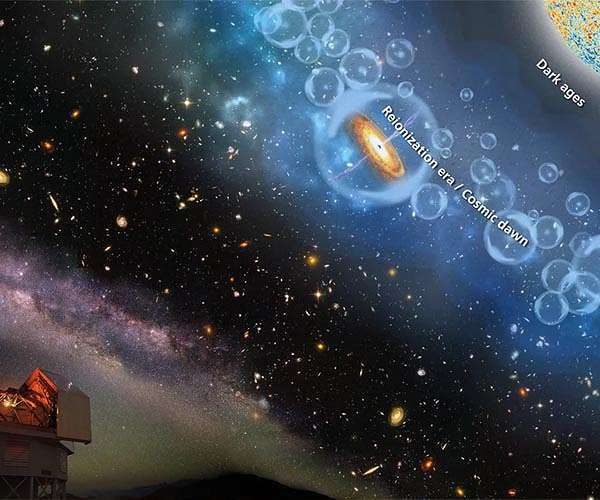25.03.2024

Advanced simulations on supercomputers, led by Dr. Ke-Jung Chen of the Institute of Astronomy and Astrophysics, Academia Sinica (ASIAA), have unveiled how the masses of the earliest stars critically influenced the characteristics of the universe's first galaxies. Published in the Astrophysical Journal, this research marks a significant advancement in understanding the early cosmos.
About 200-400 million years following the Big Bang, the universe witnessed its "cosmic dawn," transitioning from darkness to light with the ignition of the first stars and galaxies. This era began the complex structuring of the cosmos, driven by dark matter halos. These halos captured primordial gases to form the universe's earliest stars within mini dark matter halos, each about a million solar masses.
The transition from the first stars to the formation of the first galaxies is a key focus in astrophysics. As dark matter halos grew to about a billion solar masses, they could sustain ongoing star formation, marking the birth of the first galaxies. The development of these galaxies was significantly influenced by the feedback from first stars and their supernovae, affecting the chemical and physical dynamics of the early universe.
Dr. Chen and his team used high-resolution three-dimensional radiation hydrodynamics simulations, integrated with detailed supernova physics, to model these early galaxies. Their findings highlight that the masses of the first stars are a decisive factor in the formation and evolution of the first galaxies. Supernovae from massive first stars produced metals that cooled the primordial gas, enabling the formation of second-generation stars. Unlike the Milky Way, these early galaxies were irregular in shape and lacked rotational support.
The central areas of these galaxies could host hundreds to thousands of second-generation stars, with gas metallicity enriched to about 0.01 solar metallicity. Interestingly, first stars were likely not a dominant component of most early galaxies, as the gas in massive halos was often already enriched with metals from previous supernovae.
This research not only sheds light on the transition from the first stars to the emergence of the first galaxies but also sets the stage for future observations by the James Webb Space Telescope (JWST) and next-generation ground-based telescopes, aiming to directly detect these ancient cosmic structures.
Quelle: SD
